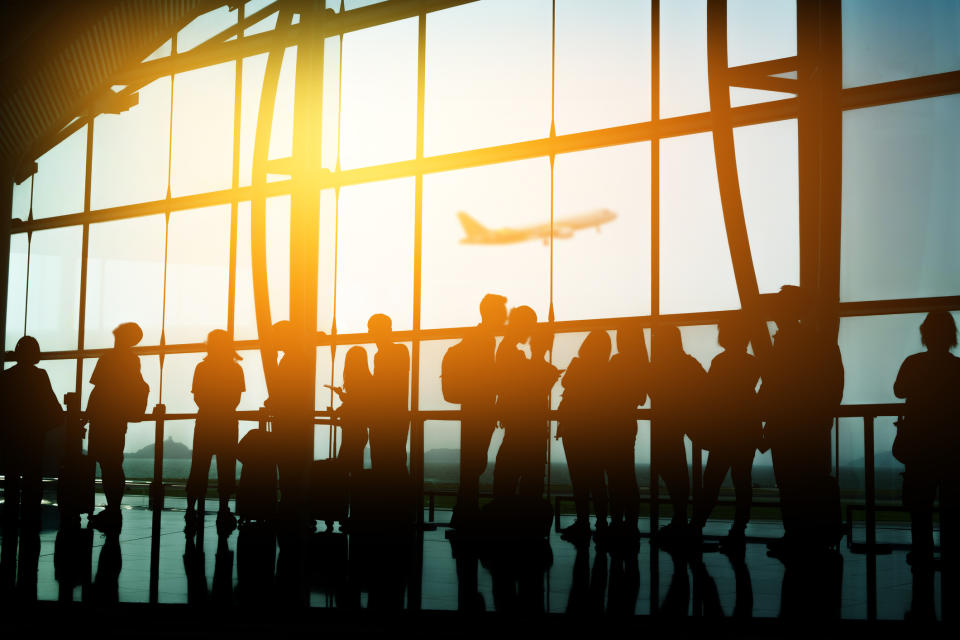Aeroportuario del Sureste’s Traffic Soars as Puerto Rico Bounces Back
For Grupo Aeroportuario del Sureste (NYSE: ASR), or ASUR, passenger traffic at its airports across Latin America continues to ascend. It increased another 15% in the fourth quarter, pushing the full-year total up nearly 6% from 2017. One notable driver in the fourth quarter was the company's airport in San Juan, Puerto Rico, where traffic rebounded 30% year over year as the region began recovering from Hurricane Maria.
But earnings didn't follow traffic higher because the company didn't record as much construction-related revenue due to a decline in expansion spending.
ASUR's results: The raw numbers
Metric | Q4 2018 | Q4 2017 | Year-Over-Year Change (Decline) |
|---|---|---|---|
Total passenger traffic | 13.1 million | 11.4 million | 14.8% |
Earnings per share | $2.47 | $3.84 | (35.5%) |
Data source: Grupo Aeroportuario del Sureste.
What happened with ASUR this quarter?
Puerto Rico bounced back:
Total passenger traffic in ASUR's nine Mexican airports rose 7.5% versus the year-ago period, to 8.1 million. The main driver continues to be Cancun, were traffic increased by 7.3% to 6 million, though the company also benefited from 8.3% growth at its eight other Mexican airports.
Traffic at the Luis Munoz Marin airport in San Juan bounced back from the impact of Hurricane Maria, surging 30.4% to 2 million. The airport benefited from strong domestic and international traffic.
Finally, passenger traffic at the company's Colombian airport group jumped 27.8% to nearly 3 million, also due mainly to a roughly 31% increase in domestic traffic.
Despite the strong traffic growth, total revenue declined 0.6% year over year. While commercial revenue per passenger increased by 0.2%, construction revenue, which the company records as it builds commercial-services venues such as restaurants and retail locations at its airports, plummeted almost 64% due to lower capital expenditures and other investments during the period.
Operating costs in Mexico, meanwhile, rose 11% year over year due to increases in maintenance, energy, and security expenses, as well as an increase in the cost of sales relating to the opening of stores in the recently finished Terminal 4 at the Cancun Airport.
For the full year, passenger traffic increased by 5.6% to 52.3 million, led by a 7.3% increase in Mexico due in large part to Cancun. Full-year revenue, meanwhile, rose 22% thanks to a 31.5% improvement in commercial revenue, which helped boost earnings per share by 68% year over year.

Image source: Getty Images.
Looking forward
ASUR continues to invest in projects to increase the capacity of its airports. One of the largest is a fifth terminal at Cancun, which will cost at least $300 million. The company anticipates starting this project in 2019.
Meanwhile, CEO Adolfo Rivas noted on the company's third-quarter conference call that it is involved in the potential Riviera Maya train project that would originate from its Cancun airport. Rivas stated that the company was working with the government to "establish the most effective way in which our Cancun airport subsidiary can participate in the coordination of this project as it moves ahead in the construction of these train terminals."
ASUR also continues to work on its capital structure so it can capture new business opportunities that might arise. The company's debt level, which ballooned in 2017 due to the acquisitions of its Colombian airport group and a larger stake in San Juan, has fallen 24% over the past year, while its leverage ratio has declined 41%. That improvement has significantly enhanced the company's financial flexibility.
More From The Motley Fool
Matthew DiLallo has no position in any of the stocks mentioned. The Motley Fool owns shares of and recommends Grupo Aeroportuario del Sureste. The Motley Fool has a disclosure policy.
